Most homes need just one Ting sensor.
However, there are circumstances where more than one Ting may be required. Review the information below to determine how many Ting sensors are right for your home.
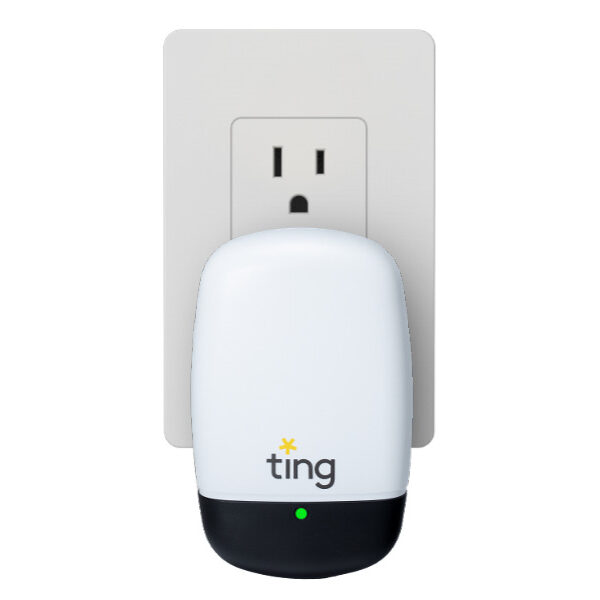
Ting Sensor Scenarios
The Ting service is designed to detect the presence of faults on the electrical distribution system directly connected to the main breaker panel that supplies power to the Ting sensor. Typical homes have one (1) main breaker panel, so only one (1) Ting sensor is required for full home coverage.
If your home has more than one (1) main breaker panel (e.g., a main breaker panel has its own direct electricity feed from your electric meter or the utility), then your home will require more than one (1) Ting sensor. One (1) Ting sensor is required for each main breaker panel. For the purposes of determining the number of Ting sensors required for a home, any breaker panel with at least 200 amp service shall also be considered a main breaker panel. If you have more than one (1) main breaker panel, a single Ting sensor will only monitor one (1) main panel and will not detect the presence of electrical fire hazards on other main panels.
If your home has a sub-panel (less than 200-amp capacity) connected to a main breaker panel (e.g., a panel fed by a main breaker panel and not directly from your electric meter or the utility), one (1) Ting sensor will cover the electrical network of the main breaker panel and sub-panel if the sub-panel is installed in the same physical structure. If your home has a sub-panel installed in a detached or remote structure separate from where the main breaker panel is located, a second Ting sensor will be required.
Please refer to the guidance below for additional details. It is your responsibility to determine if more than one Ting sensor is required for your home. If you are still not sure if your home requires more than one sensor, please don’t hesitate to contact us at [email protected]
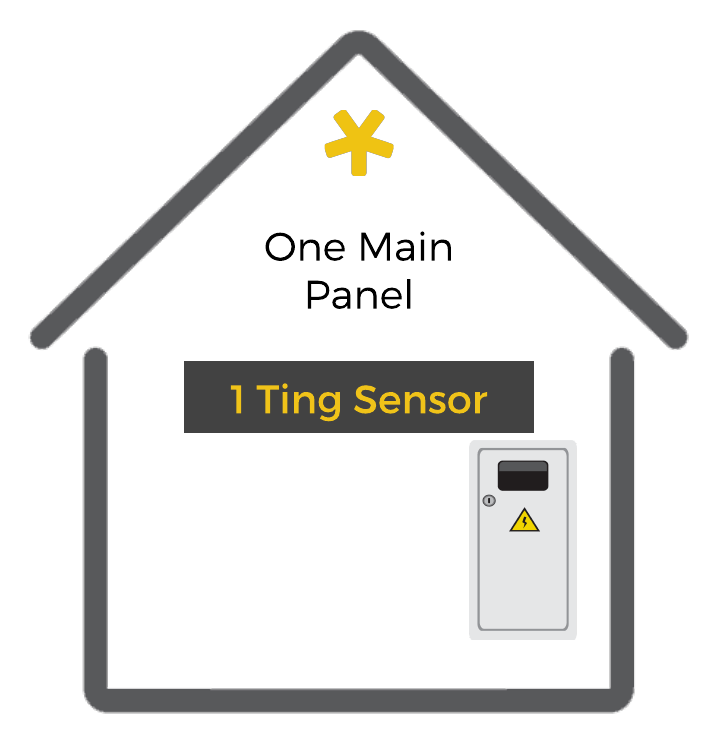
#1 - MOST COMMON
Typical Home, Single Structure with One (1) Main Breaker Panel
If your home has a single main breaker panel, one Ting sensor is required. A large majority of homes fall into this scenario.
#2 - Single Structure with One (1) Main Breaker Panel with Subpanels
If your home has a sub-panel(s) connected to a main breaker panel, one Ting sensor is required provided the sub-panel(s) is installed in the same physical structure.
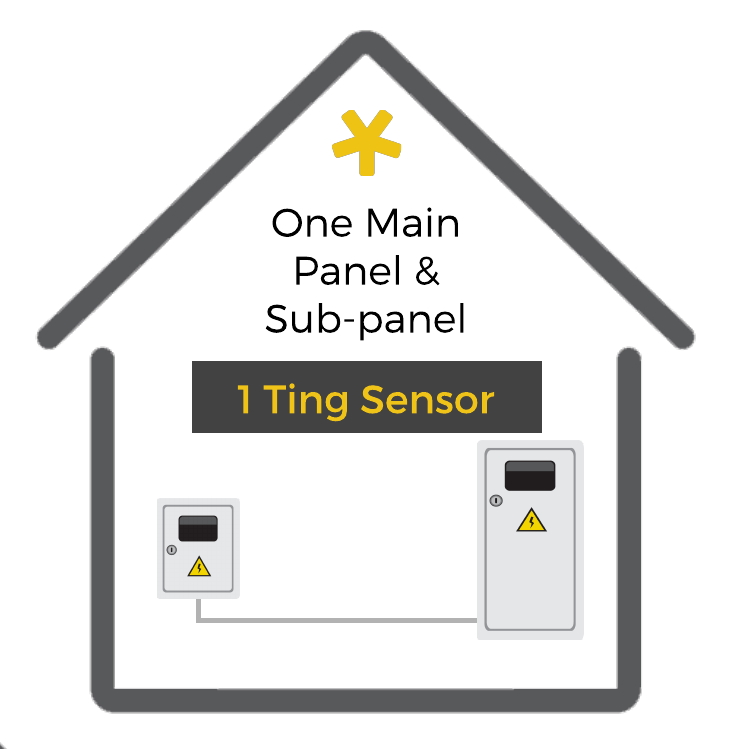
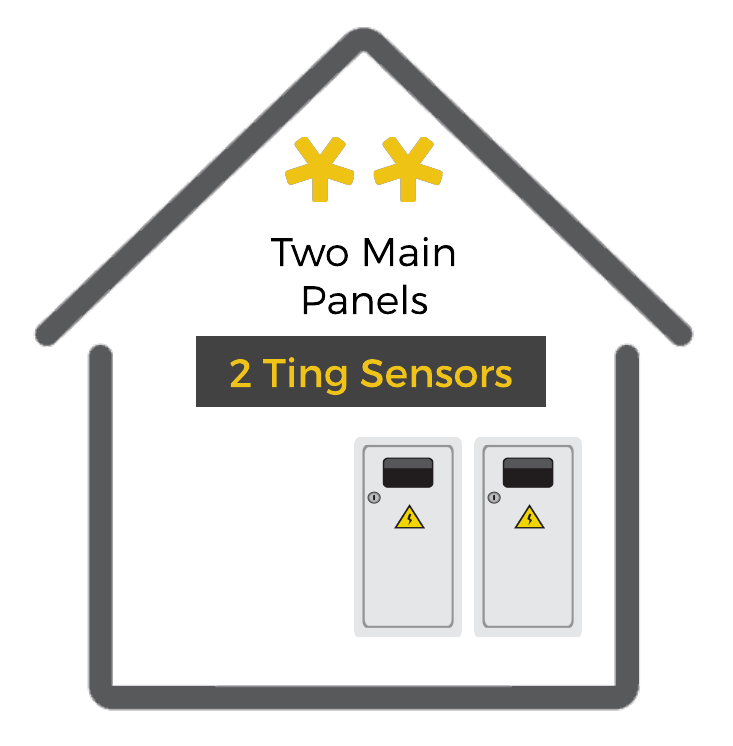
#3 - Single Structure with Two (2) Main Breaker Panels
Some larger homes have more than one main breaker panel. If your home has more than one main breaker panel (i.e., the panel has its own direct electricity feed from your electric meter or the utility) then your home will require two (2) Ting sensors, i.e., each main breaker panel requires a Ting sensor.
#4 - Detached Structure, Separate Breaker Panel from Main House Breaker Panel
If a separate breaker panel is installed in a detached structure from the main house, each structure requires its own Ting, i.e., two (2) Ting sensors, one for each structure.
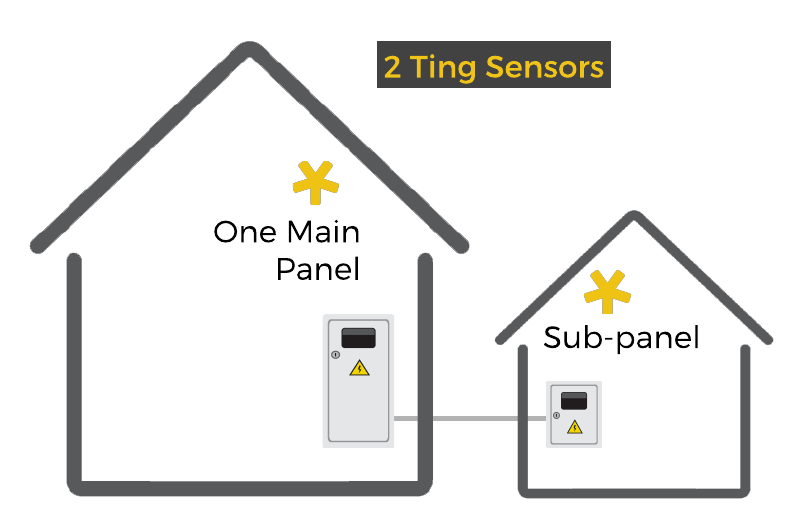
Questions?
Please see our FAQs for more information.
